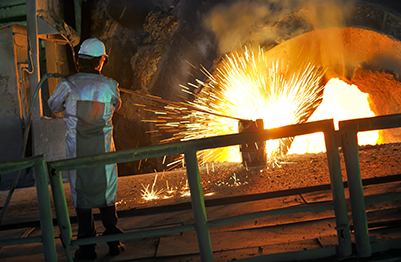 The client wanted a comprehensive examination of the long-term demand for steel within the U.S. and MSA’s comprehensive demand forecasting was the perfect solution to undertake the challenge.
The client wanted a comprehensive examination of the long-term demand for steel within the U.S. and MSA’s comprehensive demand forecasting was the perfect solution to undertake the challenge.
The Challenge
The Client is a U.S. government Cabinet department. They approached Management Science Associates, Inc. (MSA) seeking a comprehensive examination of the long-term demand for steel within the U.S. The study needed to consider the expected demand for steel-using products and services, the impact of imports of steel-containing products, and the substitution of alternative materials by steel-using industries.
The Solution
MSA’s comprehensive demand forecasting approach was the perfect solution to tackle this challenge. For demand forecasting, we look at deploying both Causal and Non-causal approaches:
a) Causal – Statistical models are used to isolate and determine the impact of key variables on demand to come up with forecasts.
b) Non-causal – Straightforward, time-series statistical techniques are used to forecast demand.
Our initial analysis showed that, historically, growth in GDP correlated very well with growth in steel demand. However, we also saw that more recently this correlation had broken down, indicating that GDP is not the only predictor of steel demand. Therefore, we concluded we could not apply a straightforward Non-causal approach in this case.
As such, we focused on a Causal approach. For this study, U.S. demand for steel was defined by the simple equation of shipments of steel products from mills, plus imports of steel, minus steel exports. Through extensive analysis, we determined that the primary drivers of steel demand that needed to be incorporated into our forecasting models were GDP, exchange rates, market sector-based demand for steel, the steel required in manufactured goods, and imports of high steel content goods.
We then conducted a series of quantitative analyses to estimate yearly demand for steel over a 10-year period. The estimates assumed both a cyclical outlook for the overall economy, one that assumed two recessions over the 10-year period, as well as a non-cyclical outlook that assumed no recessions.
The Result
The study determined that the most likely scenarios indicated that domestic steel demand was expected to grow at an annual rate of between 1.2% and 1.7% over the 10-year period.
We also determined that while growth in steel demand would be driven by consumer demand for steel-containing goods, growth would be offset by continued growth in imports of high steel content goods, the continued growth in plastics as a replacement to steel, and increased usage of alternative, lighter weight high-strength steel in the auto industry.
For more information on this MSA solution, please contact Kevin Mason (kmason@msa.com), Vice President.
